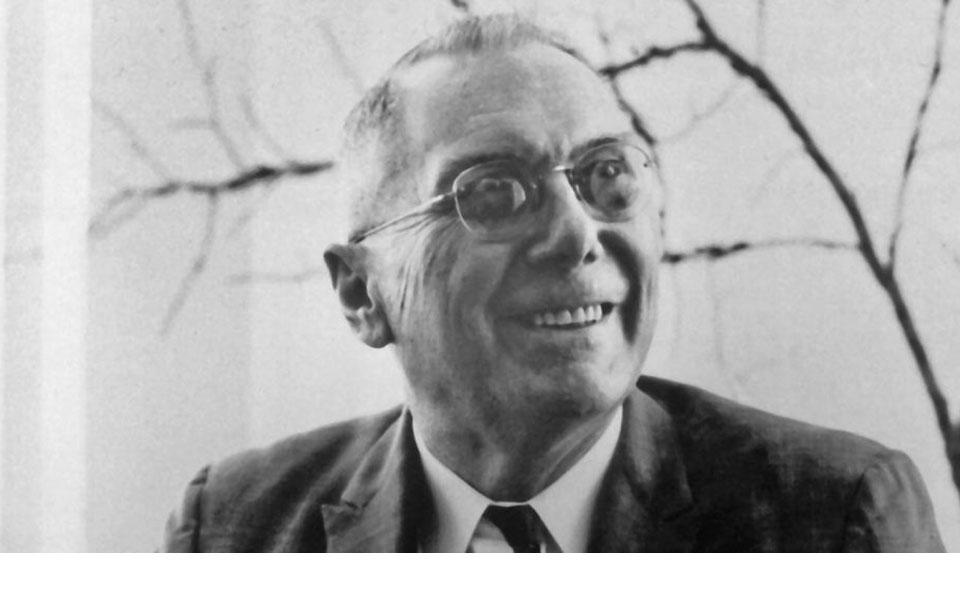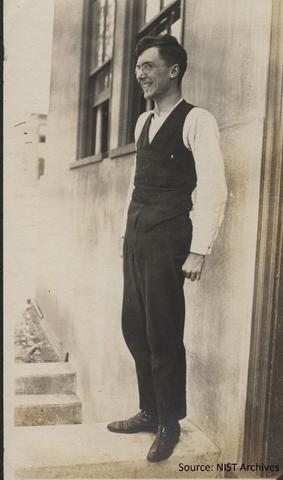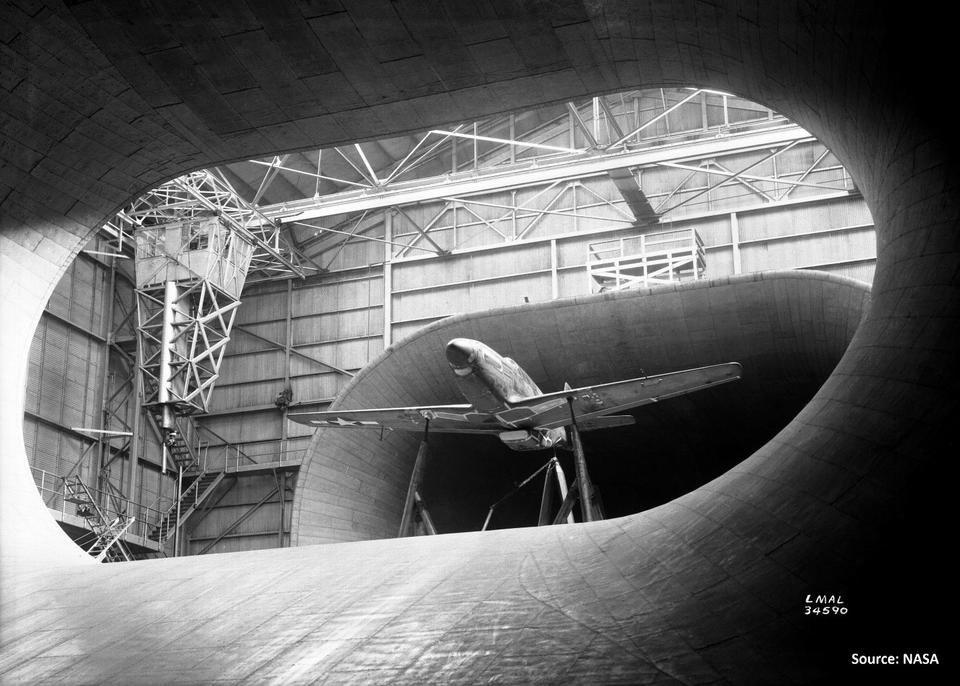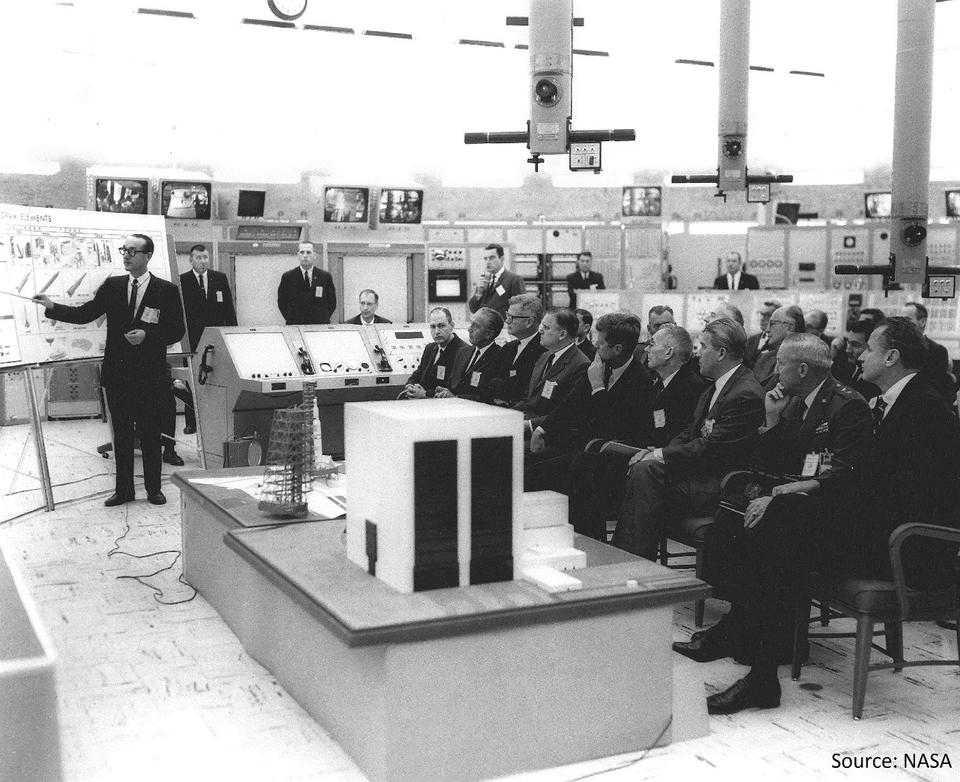Taking Measure
Just a Standard Blog

November is National Aviation History Month. So it’s fitting that it was also in November, of 1910, that a 12-year-old boy in Baltimore, Maryland, named Hugh Dryden saw an airplane for the first time. The owners of the Baltimore Sun newspaper, for promotional purposes, had paid adventurer Hubert Latham $5,000 to fly his monoplane, an Antoinette, in a looping course over the city. This sight inspired Dryden to write an essay for a school assignment comparing and contrasting airships and the new-fangled “aeroplanes.”
The young Dryden had concluded that airships were still the superior craft.
Unimpressed, Dryden’s teacher called his paper “illogical” and gave him an “F.” This must have been shocking to Dryden, who was not accustomed to receiving poor grades. It was also an inauspicious beginning for a man whom NASA would one day call “one of America's most prominent aeronautical engineers.”
While he may have been wrong about the airplane, later as a researcher at the National Bureau of Standards (NBS, now NIST), Dryden anticipated and studied supersonic flight 20 years before it would become technically feasible. He also advanced the field of wind tunnel testing, helped build the first generation of self-guided missiles, and has been credited as one of the key figures in the effort to put a man on the moon.
Let’s celebrate National Aviation History Month with a brief look at his career.
Taking Flight

Luckily, Dryden’s failing grade in his first attempt at aviation research was a rarity. In fact, Dryden was such an accomplished student that it took him only two more years to earn a high school diploma, at the age of 14. A local newspaper described his academic acumen as “wizard-like.” He then earned a college degree in only three years and went on to receive his Ph.D. in physics and mathematics from Johns Hopkins University in the spring of 1919. He was 20 years old.
In 1918, while still a Ph.D. student at Johns Hopkins, Dryden joined NIST as a laboratory assistant working in its newly constructed wind tunnel, one of only a few in the U.S. Not long after earning his Ph.D., Dryden was assigned to head NIST’s aerodynamics lab. Under Dryden, the lab researched everything from airplane propellers and the efficiency of household electric fan blades to the best placement of domestic rooftop ventilators and the effects of wind pressure on the Empire State Building.
Despite the variety of research they did, there was one project Dryden politely declined to take on. In a book about Dryden, author Richard K. Smith recounts how Dryden received a letter from a member of the public containing a paper airplane and a request that it be tested in the wind tunnel. According to Smith, Dryden playfully wrote back “apologizing that their wind tunnel was not equipped to test paper airplanes; but he added that he and his colleagues had spent some time flying the paper airplane around the office and found its flight characteristics to be quite good.”
While paper airplanes were out, other aircraft models were not. In the 1920s, Dryden and his crew tested a model of a naval airship, first in their wind tunnel, and later in a Navy-owned wind tunnel. The data from the two different tunnels didn’t match up. Perplexed, Dryden and colleague Arnold Kuethe designed special instruments to more accurately measure air fluctuations inside the tunnels. They discovered that even small differences in turbulence in the tunnels would cause large discrepancies in experimental data. Dryden was able to recommend changes to wind tunnel design that greatly reduced these discrepancies, and in the process won some of his earliest acclaim as an aeronautical engineer.
Lofty Visions

Dryden didn’t only undertake applied research. Starting in 1920, he and physicist (and eventual NIST director) Lyman Briggs began to study the physics of airfoils at the speed of sound (1,236 km/h). Not only was their work some of the earliest explorations into supersonic flight, but it was also audaciously forward-thinking. As Dryden biographer Michael Gorn noted (PDF), “when he began his inquiries (into speed of sound flight) in 1920, the winner of the Schneider Cup Race—a competition among the fastest aircraft in the world, pressed to their limits—flew at a mere 107 miles per hour (172 km/h).” It wouldn’t be until 1947, more than two decades later, that test pilot Chuck Yeager first reached and broke the sound barrier.
Dryden continued his pioneering aviation work into World War II. His advanced wind tunnel designs were used to test the innovative low-drag wings on the now-iconic P-51 Mustang fighter plane. Dryden was also put in charge of guided missile development for the U.S. Navy. Though there were several guided-missile projects during the war, Dryden’s self-guided missile, called the Bat, was the only one successful enough to have been used in combat and was credited with sinking several enemy ships.
After the war Dryden became the head of research for the National Advisory Committee on Aeronautics (NACA), a federal agency that oversaw the development of U.S. aviation technology. There he pushed the boundaries for future space exploration by supporting the development of rocket planes, the most famous of which was the X-15, whose pilots earned astronaut status from the U.S. Air Force for reaching an altitude higher than 80 kilometers (50 miles).
A Man on the Moon

Despite all his aeronautical accomplishments, perhaps Dryden’s most pivotal achievement was not technological, but political. After the Soviet Union launched the Sputnik satellite in 1958, NACA was reorganized to focus on space flight and renamed the National Aeronautics and Space Administration (NASA). Dryden was appointed deputy administrator. When the Soviets put the first man in space, U.S. President John F. Kennedy called his administration’s science advisors to the White House to discuss how America could regain scientific superiority.
The answer was not obvious; at the time the leading candidate project was a desalination plant!
NASA’s initial proposal to Kennedy was to send a manned spacecraft to orbit the moon. It was Dryden, however, who personally lobbied Kennedy to think bigger than another “man-in-a-can” orbital project and aim to land astronauts on the moon. Although Dryden was not the first to conceive of a moon landing, he was the one who convinced President Kennedy to make the political and financial commitment necessary to make it a reality.
Unfortunately, Dryden did not live to see Neil Armstrong take his first steps on the moon in 1969. He died on December 2, 1965. In honor of Dryden and his contributions to aeronautics and the Apollo program, NASA named one of its California laboratories the Hugh L. Dryden Flight Research Center in 1976. The center was renamed the Neil A. Armstrong Flight Research Center in 2014 after Armstrong died.
Not to worry, though, NASA also named a lunar crater after Dryden, and there are no immediate plans to rename that.





